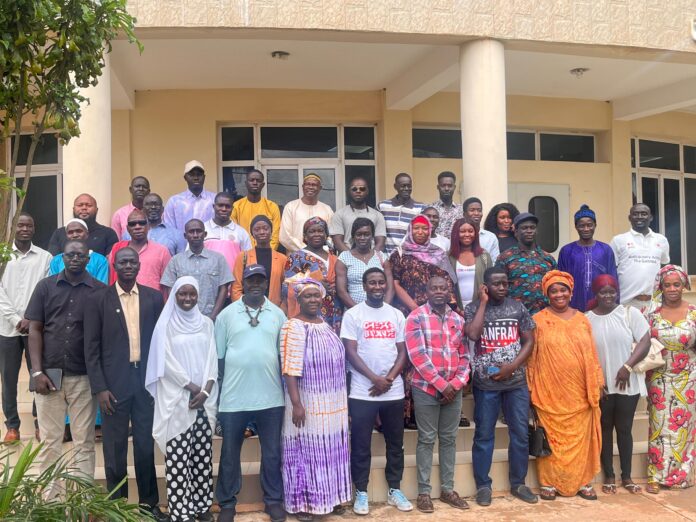Written by: Alieu Jallow
With over 200,000 people living along the flood-prone Kotu Stream corridor, disaster isn’t just a possibility — it’s an annual threat. Now, thanks to the West Africa Coastal Areas Resilience Investment Project (WACA ResIP 2), in collaboration with The Gambia’s National Disaster Management Agency (NDMA), communities are stepping up to confront it head-on.
In line with the Seasonal Rainfall Prediction (SRP) for July–September 2025, WACA and NDMA have organised a capacity-building workshop for Ward Disaster Committees. The training targets nine wards along the Kotu Stream, each of which finalised a contingency plan earlier this year with WACA’s support.
The Department of Water Resources’ JAS 2025 forecast predicts average to above-average rainfall, with a 35% chance of above-normal and a 45% chance of near-normal rainfall. Experts have warned that this could lead to widespread flooding, threatening crops, property, and lives — making this workshop all the more urgent.
Speaking at the opening of the training, NDMA Monitoring and Evaluation Officer Babucarr Fofona, speaking on behalf of the Executive Director, highlighted that more than 800 households in the Kanifing Municipality and the West Coast Region were affected by disasters last year — mainly flash floods and domestic fires.
“These events have forced many families from their homes, destroying personal belongings and food supplies, and worsening their vulnerability,” Fofona said. He attributed much of the damage to poor drainage infrastructure, unplanned settlements, and individual behaviours.
Recognising the urgent need, NDMA and the WACA project convened this forum to equip participants with the practical skills and knowledge to implement the contingency plans developed last year.
“Take this opportunity seriously — not just for your own growth but for the safety and resilience of your communities and the country at large. This training comes at a crucial time. The two days allocated to operationalise your ward disaster plans are a proactive and strategic step toward preparedness, mitigation, response, and recovery. This aligns with the National Disaster Risk Management Policy and Strategy 2024–2033 and the Sendai Framework for Disaster Risk Reduction 2015–2030,” he urged.
The JAS report warned that expected rainfall could lead to flooding in both riverine and low-lying urban areas like Kotu. It recommends raising community awareness, cleaning drainage systems, and conducting simulations to improve disaster response.
Muhammed Leroy A. Gomez, Environmental Specialist with the WACA project, said the 2025 rainfall forecast was the key motivation behind organising the training. He encouraged participants to take full advantage of the opportunity to help build resilience across their communities.
“Each ward sent about 13 members to the training, but there are others back home who couldn’t make it. So once you return, share the knowledge and skills you’ve gained with your fellow community members,” he urged.
Latrikunda Sabiji Ward Councillor Musa Bah emphasised the training’s importance in preparing for disaster response.
“This contingency plan training is very important. It covers key areas like who to contact — fire service, police — how to evacuate, and how to distribute relief. During floods, many houses can’t even put out fires. We look forward to activating this plan so that we can respond effectively when disaster strikes,” he said.
Binta Sey Jadama, a facilitator and senior executive at NDMA, stressed the critical role of local communities in disaster response.
“Preparedness starts at the grassroots. That’s why we are building the capacity of local communities so they can be the first responders during any emergency,” she said.
WACA’s approach places communities at the heart of resilience-building — not just as beneficiaries, but as frontline actors. With the rainy season just weeks away, the efforts along the Kotu Stream could be the difference between disaster and survival.
As The Gambia braces for an uncertain rainy season, the message is clear: preparedness begins at the community level. And along the Kotu Stream, that work is already underway.




